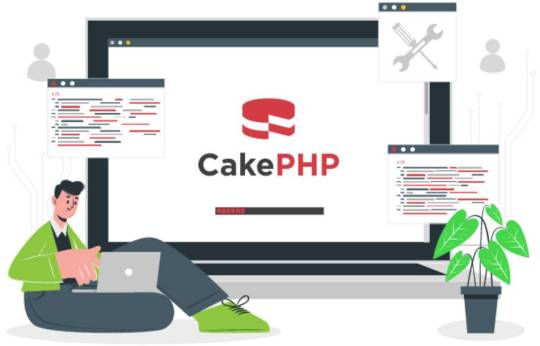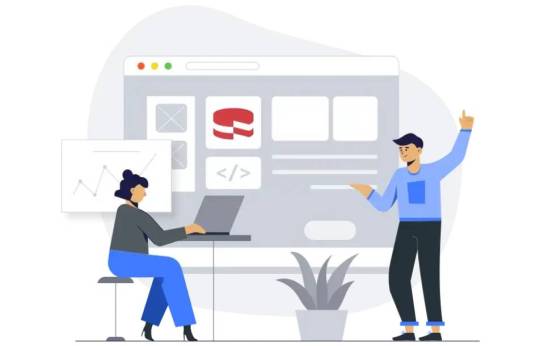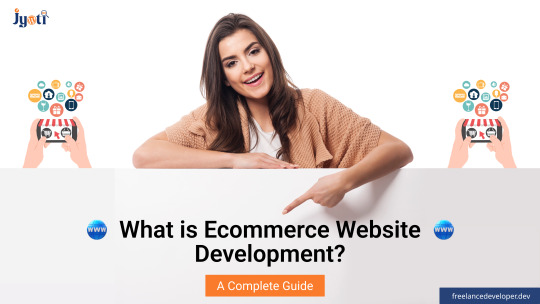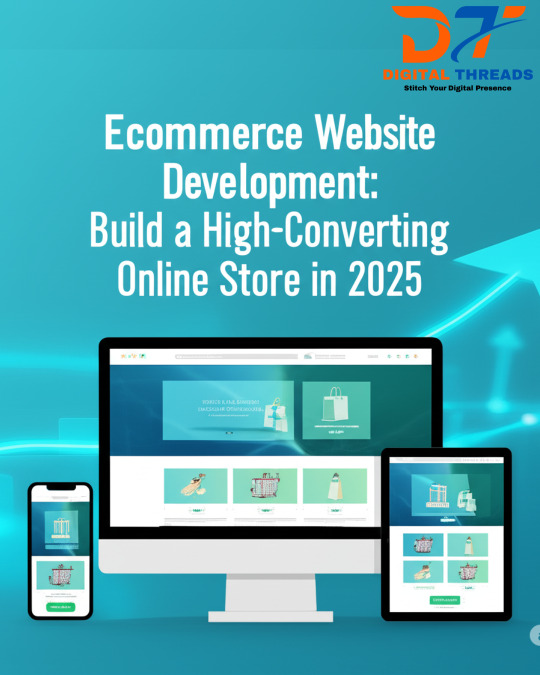#ecommerce web design
Explore tagged Tumblr posts
Text

#digital marketing in Auckland#ecommerce web design#seo services Auckland#mobile app development company Auckland#app development Auckland
2 notes
·
View notes
Text
Latest & Upcoming Ecommerce Technologies & Trends in 2024

The eCommerce landscape is rapidly evolving with trends like AI and ML enabling personalized recommendations, predictive analytics, and chatbots, while AR and VR offer immersive shopping experiences. Are you ready to transform your e-commerce business in 2024? Our latest blog post explores deeply into the cutting-edge eCommerce technology and trends that are set to revolutionize the industry. explore trends with our latest blog: https://www.sprybit.com/blog/latest-upcoming-ecommerce-technologies-trends-in-2024/
#Ecommerce Development Services#Ecommerce Development Company#Ecommerce Web Design#Ecommerce Development Services Company#Hire Ecommerce Website Developers#Ecommerce Trends#Ecommerce Technolgies & Trends#Ecommerce Technologies
2 notes
·
View notes
Text
CAKE PHP DEVELOPMENT

What is CakePHP?
CakePHP is an open-source web framework written in PHP scripting language for web development based on the core PHP framework and MVC architecture. MVC architecture mostly Centre on model, view, and controller of the specific project to give logical separation of code from the end user.
CakePHP was created by Michal Tatarynowicz in April Year 2005. The framework gives a strong base for your application. It can hold each aspect, from the user’s beginning request all the way to the final supply of a web page.
And since the framework follows the fundamental of MVC, it permits you to simply customize and expand most aspects of your application.
The CakePHP also gives a simple organizational structure, from filenames to database table names, keeping your whole application constant and logical. This concept is easy but impressive. Go around with the protocol and you’ll always know absolutely where things are and how they’re arranged.
Here’s a quick list of CakePHP features such as:
It follows MVC architecture
Rapid development
Application scaffolding
Active, friendly community
Built-in validations
Secure, scalable, and stable
Flexible licensing
Localization

Why select CakePHP for website development:
1. Compatible : The Cakephp is compatible with several versions of PHP as well as with the in demand website directories.
2. Customizable Elements : The Elements residing inside the framework are simple to redesign and understand.
3. No Download Required : There is no requiring downloading the whole package as you can get started by directly installing the database.
4. Code Reusability : Coding from scratch isn’t needed as code-written can be used so many times in the project decrease time and effort.
5. MVC Pattern : Huge apps need a structured pattern to get started, which CakePHP offers with its special MVC pattern.
6. Code Simplicity : Easy code written in PHP can do the trick for you. The framework is simple, successful and high on areas like security and session handling.
“Make use of CakePHP means your core application’s is well checked and is being always improved.”
At Kudosta, Website Design and Development Company we provide CakePHP web services such as Framework Customization, CakePHP Module Development, CakePHP Migration and lots more. Try to deliver the best of CakePHP web services in the market.
We have worked for several big scale as well as medium scale enterprises. Our team of skilled CakePHP programmers work with passion, practice new techniques offers you the best depending on your project’s needs.
#php development#ecommerce web design#custom web design#wordpress website#custom web development#seo services#wordpress development#web design#web development#custom web#laravel#react#nodejs#cakephp
4 notes
·
View notes
Text
What Is Ecommerce Website Development? A Complete Guide

Explore the world of eCommerce website development with my comprehensive guide. Learn about the ins and outs of eCommerce website development and how to create a successful online store.
#ecommerce website#ecommerce web design#ecommerce developer#build ecommerce website#ecommerce development#custom ecommerce development
2 notes
·
View notes
Text
Your Online Store Deserves More Than Just a Website: Why eCommerce Development Done Right Can Change Your Business
In today’s digital era, having an online store is not a privilege—it’s a necessity. Whether you're a startup or a growing business looking to scale, your website is your storefront, your brand identity, and your best salesperson all in one.
But here’s the truth: creating an eCommerce site is not just about good looks.
At e.Soft Technologies, we don't just build websites—we build shopping experiences that are smooth, fast, and designed to help your business grow.
What Makes a Good Online Store?
When someone visits your site, everything should just work.
The layout should be intuitive.
Products should be easy to find.
The checkout process should be quick and seamless.
And it should work just as well on a phone as it does on a desktop.
As a leading eCommerce website development company, that's exactly what we deliver. From Shopify to Magento and WooCommerce, we specialize in platforms that convert visitors into customers.
No tech stress—just clean, user-friendly websites made for real businesses.
We Build What’s Right for You
Every business is unique, so we don’t believe in one-size-fits-all solutions.
We listen, we plan, and then we build what’s right for you.
Starting a small shop? We’ll get your Shopify store live quickly.
Have a larger product catalog? Our Magento developers have you covered.
Using WordPress? Our WooCommerce experts can build you a fully functional online shop.
From small D2C brands to growing multi-vendor marketplaces—we build to meet your specific needs.
Moving to a New Platform? We've Got You
Switching from one eCommerce platform to another can feel overwhelming.
What if you lose your data? What if your site crashes?
That’s where we come in. Our eCommerce migration services ensure a smooth transition:
No data loss
No downtime
Clean, stress-free handover
We also offer eCommerce integration services—connecting your store to your inventory systems, payment gateways, delivery solutions, and even your marketing tools. Everything works together behind the scenes.
Mobile-Friendly, Always
With more people shopping on their phones than ever before, if your site isn’t mobile-friendly, you’re losing business.
That’s why every website we build is:
Responsive
Optimized for all screen sizes
Built mobile-first
Need something more advanced? We also build custom mobile eCommerce apps for a seamless, native shopping experience.
What Does It Cost to Build an eCommerce Website in Mumbai?
The truth? It depends on your needs. But we keep things:
Simple
Honest
Affordable
Whether you're building a basic online store or need full custom eCommerce development, we guide you through your options—no hidden costs.
If you're searching for “eCommerce website development cost in Mumbai,” we’re happy to walk you through the possibilities.
Real Stores, Real Results
We’ve been building eCommerce websites for over 25 years. We know what works, what doesn’t, and how to transform your idea into a successful online store.
Our experience includes:
Simple D2C website development
Large multi-vendor marketplace development
Full-stack eCommerce solutions—from design to development and even marketing support
If you want a team that understands both technology and business, we’re the right fit.
Ready to Sell Online?
If you're thinking about starting or upgrading your online store, let’s talk.
At e.Soft Technologies, we don’t just build websites—we build stores that sell.Get in touch today, and let’s create something great together.
#ecommerce web design#ecommerce website development#web development#web developing company#magento development services#woocommerce development services#e.Soft Technologies
0 notes
Text
Professional Ecommerce Website Design Agency
Goldman Global is a trusted ecommerce website design agency that helps businesses create powerful online stores. We design easy-to-use, mobile-friendly, and fast-loading ecommerce websites that help you sell more. Whether you are starting a new online shop or want to improve your current one, our expert team is here to help. With the latest tools and a user-friendly approach, we ensure your customers have a smooth shopping experience.

#ecommerce#ecommerce website design#ecommerce web design#website design#web design#web development#wordpress website design agency#seo agency#business
0 notes
Text

How to Build a Profitable Ecommerce Website in 2025
Master the essentials of ecommerce development in 2025. Proven strategies to create high-converting, revenue-driving online stores.
#ecommerce website development#ecommerce development 2025#build ecommerce website#profitable online store#ecommerce web design#ecommerce strategies
0 notes
Text
How Smart Web Design Can Boost Your eCommerce Conversions

In the world of digital commerce, your website is more than just a storefront—it's the heart of your business. As competition in the online marketplace intensifies, the difference between success and failure often comes down to one critical factor: smart eCommerce website design.
Whether you’re launching a new store or scaling an existing one, the way your website is designed can directly impact your conversion rates. A strategically designed website doesn't just look appealing—it guides users seamlessly toward making a purchase. In this article, we’ll explore how intelligent eCommerce web design boosts conversions and why partnering with an experienced eCommerce web design company can make all the difference.
1. First Impressions Matter: The Psychology of Design
Visitors decide within milliseconds whether they trust your website. A modern, clean design with intuitive navigation instills confidence. On the other hand, cluttered layouts, slow load times, or confusing structures often lead to high bounce rates.
Smart eCommerce website design incorporates:
Consistent branding to reinforce credibility
High-quality visuals to showcase products attractively
Responsive design to cater to mobile shoppers
Whitespace and clean layout to focus attention on the key elements
Investing in professional design services from a skilled website development company ensures your website speaks the language of trust and professionalism.
2. User Experience (UX) is the New Currency
The path to conversion must be frictionless. A well-optimized UX enhances user satisfaction, making it easier for them to find what they need and check out quickly. Key UX elements include:
Easy navigation with clear menus and search functionality
Fast-loading pages to minimize drop-offs
Mobile-first design, considering that over 60% of eCommerce traffic comes from mobile devices
Streamlined checkout to reduce cart abandonment
A smart eCommerce website design focuses not only on aesthetics but also on how users interact with each page. Collaborating with an expert eCommerce web design company ensures your site is optimized for every touchpoint.
3. Conversion-Centric Design Elements
While aesthetics draw users in, it’s the micro-design decisions that drive them to convert. Elements that significantly boost eCommerce conversions include:
Prominent Call-to-Action (CTA) buttons are placed strategically
Urgency triggers, like countdown timers or low-stock notifications
Social proof, such as reviews and testimonials
Trust signals, including secure payment icons, return policies, and certifications
High-converting product pages with clear descriptions, zoomable images, and video demos
These features must be part of a cohesive eCommerce website design strategy to effectively guide the user toward conversion.
4. SEO-Ready Structure for Organic Visibility
No matter how beautiful your site is, if it's invisible to search engines, you're missing out on valuable traffic. Smart eCommerce web design includes SEO best practices, such as:
Clean code and fast load speeds
Optimized images and product metadata
Structured internal linking
Mobile Optimization
Clear URL structure and use of schema markup
An experienced website development company can seamlessly integrate SEO with design to enhance visibility and attract qualified traffic.
5. Personalization & AI Integration
Modern eCommerce users expect a personalized experience. Smart web design integrates tools like AI-powered product recommendations, personalized content, and behavior-driven pop-ups. These features help increase average order value and conversion rates.
Leading eCommerce web design companies leverage data analytics and automation tools to craft personalized journeys for each user.
6. Scalability and Future-Proofing
Smart design isn’t just about today’s needs—it prepares your business for growth. A scalable eCommerce website design allows you to add new products, features, or even entire marketplaces without rebuilding from scratch.
Partnering with a future-ready website development company ensures your site remains adaptable, secure, and equipped to handle increased traffic and sales.
Why Partner with a Professional eCommerce Web Design Company?
While DIY platforms and templates may offer a quick start, they often lack the customization, scalability, and strategic depth required to truly maximize conversions. A dedicated eCommerce web design company brings:
Expertise in UX/UI design
Integration with leading eCommerce platforms like Shopify, Magento, and WooCommerce
Advanced functionality like live chat, custom checkout, and third-party apps
Ongoing support and optimization for peak performance
Your website is a business asset—treat it like one.
Final Thoughts
Your eCommerce store's design is one of the most powerful levers for improving conversions. Every button placement, image choice, and layout decision matters. A smart, conversion-focused eCommerce website design not only enhances the user experience but also builds trust, drives engagement, and increases revenue.
Whether you're building your first online store or looking to optimize an existing one, working with an expert eCommerce web design company or a full-service website development company can help you unlock your site's full potential.
Remember: Smart design isn't just a cost—it's an investment in growth.
Looking to upgrade your eCommerce store? Contact a trusted website development company today and discover how intelligent design can take your business to the next level.
#web development company#website development#web design#website designing company#ecommerce website development#ecommerce web design#ecommerce web solutions oman
0 notes
Text
Blune Kids - Clothing with style for young and old alike
We are happy to announce the launch of the new website blune.ch, the ecommerce dedicated to fashion for children from 0 to 12 years old, where every detail tells a story of care, style and love. Blune is a small, family-run physical and online concept store, established in December 2022. The name is a very sweet tribute to the founder’s two daughters, Blue + June, to whom the project is…
#ecommerce#eCommerce web design#Internet sites#Italian#locarno#online shop realization#ticinoweb#web design#web designer
0 notes
Text

#web design#website design#responsive web design#custom web design#professional web design#eCommerce web design#WordPress web design#UX design#UI design#web development#mobile-friendly websites#SEO-friendly web design#landing page design#website redesign#graphic design#Denver#Colorado Springs#Aurora#Fort Collins#Grand Junction#Fruita#Clifton#Palisade#Delta#aspen#colorado
0 notes
Text
Professional eCommerce Website Development in Chennai – Iris Coders
Iris Coders provides professional eCommerce website development in Chennai, offering customized, scalable, and secure eCommerce websites that enable businesses to provide better customer experience, boost sales, and develop successfully in the online marketplace.
#ecommerce development agency#ecommercesolutions#ecommerce#ecommerce web design#ecommerce development company
0 notes
Text
Themekarts — The Best Website Development & Software Company in Raxaul
Looking for top-notch website development or reliable software solutions in Raxaul? Themekarts is your go-to destination!
We are proud to be recognized as the best website development and software company in Raxaul, delivering creative, fast, and scalable digital solutions tailored to your business needs. From stunning websites to custom software, mobile apps, and e-commerce platforms — we do it all with passion and precision.
Why Choose Themekarts?
✅ Expert Team of developers, designers, and digital strategists
✅ Custom Website Development — responsive, modern, and user-friendly
✅ Powerful Software Solutions — built for performance and scalability
✅ Local Support in Raxaul — personalized service with a friendly approach
✅ Affordable Pricing — high-quality work at competitive rates
Our Services Include:-
Website Design & Development
E-commerce Solutions
Mobile App Development
Custom Software Development
SEO & Digital Marketing
Freelance Services Marketplace
Ready-to-use Website Themes
Whether you’re a local business, startup, or growing enterprise, Themekarts helps you stand out online and reach your goals with confidence.
Let’s build something amazing together — right here in Raxaul!
#best website development company in raxaul#website development#wordpress development#web development#web design#web developers#website design#software development#informative#technology#software#information technology#digital marketing#crm software#website theme#website template#ecommerce website development#ecommerce web design#business website#school management software#billing software#erp software#landing page#digital products
1 note
·
View note
Text
youtube
Want to build an online store like JaipurRugs but have ZERO coding skills?
Good news — you don’t need any! 💻✨
In my latest video, I show you step-by-step how to create a stunning, professional e-commerce website — the easy way!
👉 Watch here: https://www.youtube.com/watch?v=cB8S2Pi3Uy4 ✅ Beginner-Friendly ✅ No Coding Required ✅ Full Setup Guide
Start your online business today! 🔥
#ecommerce#website#web development#ecommerce website development#ecommerce web design#ecommerce web development company#ecommerce website design services#ecommerce website builder#Youtube
0 notes
Text
Ecommerce Web Design Best Practices for 2025
Up to 93% of buyers say that look is the most important consideration when purchasing.
To put it another way, the way you approach eCommerce web design can have a significant impact. The essential elements of a strong eCommerce website design will be examined in this post.
To put it briefly:
Users are kept attentive and involved by a simple layout with easy navigation.
SSL certificates, trust badges, and unambiguous privacy policies reassure customers.
Customising content and recommendations increases engagement and conversions.
User pleasure and accessibility are guaranteed via speed and mobile optimisation.
4 Key Elements of eCommerce Homepage Design
You’re not alone if you’re feeling overpowered by all the requirements for perfection. Here’s what you should concentrate on:
1. A prominent search bar
Any e-commerce web design and development must include a noticeable search bar. It enables users to locate particular products quickly without having to go through several pages. Position the search bar so that users can quickly see it, usually in the header.
By giving users a clear route to the products they want, a strategically placed search bar improves user experience by saving them time and lowering irritation. Ensure your search bar is available on all devices for optimal mobile SEO.
2. Highlighted Items or Groups
You can direct readers to high-converting pages by including seasonal or popular goods on your homepage. You may immediately grab the user’s attention by emphasising certain goods or categories.
This strategy highlights popular products and guides customers to those that have a higher chance of becoming purchases. Make these highlighted areas stand out by using excellent photos and captivating captions.
3. Menu for Clear Navigation
To arrange things into categories that are easy to understand, a menu with straightforward navigation is essential. Because of this, users may easily navigate the website and locate what they’re looking for.
The menu should have categories and subcategories that make sense to the user and be clear and rationally organised. Keep things simple and ensure every menu item has a clear label.
This enhances customers’ overall buying experience and creates a scalable website for your high-growth teams by facilitating smooth user navigation.
4. An engaging slider or hero image
A captivating slider or hero image captures users’ interest and successfully conveys your brand’s message. This visual component must be excellent and pertinent to your intended audience. Make use of it to draw attention to important goods, sales, or brand principles.
Users are drawn in and encouraged to explore more by the hero image or slider, which acts as the homepage’s main attraction. Make sure it complements the style of your brand and is aesthetically pleasing.
E-commerce Website Design Best Practices
Are you confused by best practices? Here’s what you need to know:
1. Give Page Speed Priority
Because they decrease bounce rates and improve search engine rankings, fast load times are critical to both SEO and user experience. Image optimisation through compressing the images without lowering the quality of the images, code minification to reduce file sizes, and the implementation of a content delivery network (CDN) for content delivery to access the maximum speed are essential.
These methods make your e-commerce web design and development load very fast, providing visitors with an uninterrupted experience and improving the ranking of your website in the search engines.
2. Make it compatible with mobile devices.
Make sure your website is responsive and simple to navigate on smaller screens, keeping in mind the increased number of individuals accessing the internet on handhelds. This involves buttons and images being constructed to scale nicely and be click-friendly for touch operation.
Besides, by reducing friction and allowing for smoother fulfilment of purchases for mobile shoppers, optimising the checkout process for mobile shoppers can drive conversion.
3. Make Good Use of Whitespace
The deliberate use of whitespace, or that which is between items of eCommerce web design, is crucial in order to maximise the visual appeal and readability of text. Through the judicious use of whitespace, navigation on a site can be made easier by highlighting key features like call-to-action buttons or significant text items.
This method also helps to create a clean, sleek look that facilitates improved user interaction by making the site appear more refined and structured.
4. Good CTA
Calls-to-action (CTAs) prompt users to perform a particular action, such as buying something or subscribing to a newsletter. “Buy Now” or “Sign Up” is a concise action-speak stating the desired action.
CTAs need to be in sensible, prominent locations where users are likely to notice them, for example, in the header or following product descriptions. To get attention and encourage clicks, contrasting colours must be used to highlight buttons.
5. Get SEO-friendly
Search engine optimisation of e-commerce websites makes them more visible and drives more natural traffic. To assist search engines in understanding your content better, integrate relevant keywords onto product pages, titles, and descriptions.
Make your website responsive on mobiles and load swiftly, as both these factors impact search engine ranks. To further enhance accessibility and give search engines more context, add alt text to images.
6. Incorporate Content Created by Users
On eCommerce websites, integrating user-generated content enhances engagement and trust. Showcasing customer feedback and reviews influences purchase decisions by validating the quality and authenticity of the products.
Authentic reviews emphasise positive experiences and comfort to potential buyers. Users’ trust and association can be further enhanced by encouraging them to include photos or videos of products in real-life settings. Such entries act as organic endorsements aside from providing real-life content.
Conclusion
A professionally made eCommerce web design combines trust, usability, speed, and visual appeal. Businesses can maximise user experience, conversions, and leadership in the continuously changing digital economy by considering primary design conside
0 notes
Text
#eCommerce Website Development#Online Store Development#eCommerce Solutions#eCommerce Web Design#Custom eCommerce Development#Shopify Development#eCommerce Website Design Services
0 notes
Text
Improve Your Online Image with Custom Ecommerce Website Design in Edinburgh
Use our Web design agency in Edinburgh to boost the online visibility of your brand. Our skilled team blends technical mastery with creative flare to produce visually stunning websites that also yield quantifiable outcomes.
From fluid navigation to responsive design, our custom ecommerce website design Edinburghagency makes sure your website offers an excellent user experience. Our online solutions, situated in Edinburgh, are tailored to meet your specific business objectives, whether your target audience is local or worldwide. Select Website Design to improve your online visibility and maintain an advantage in the ever-changing internet market.

0 notes